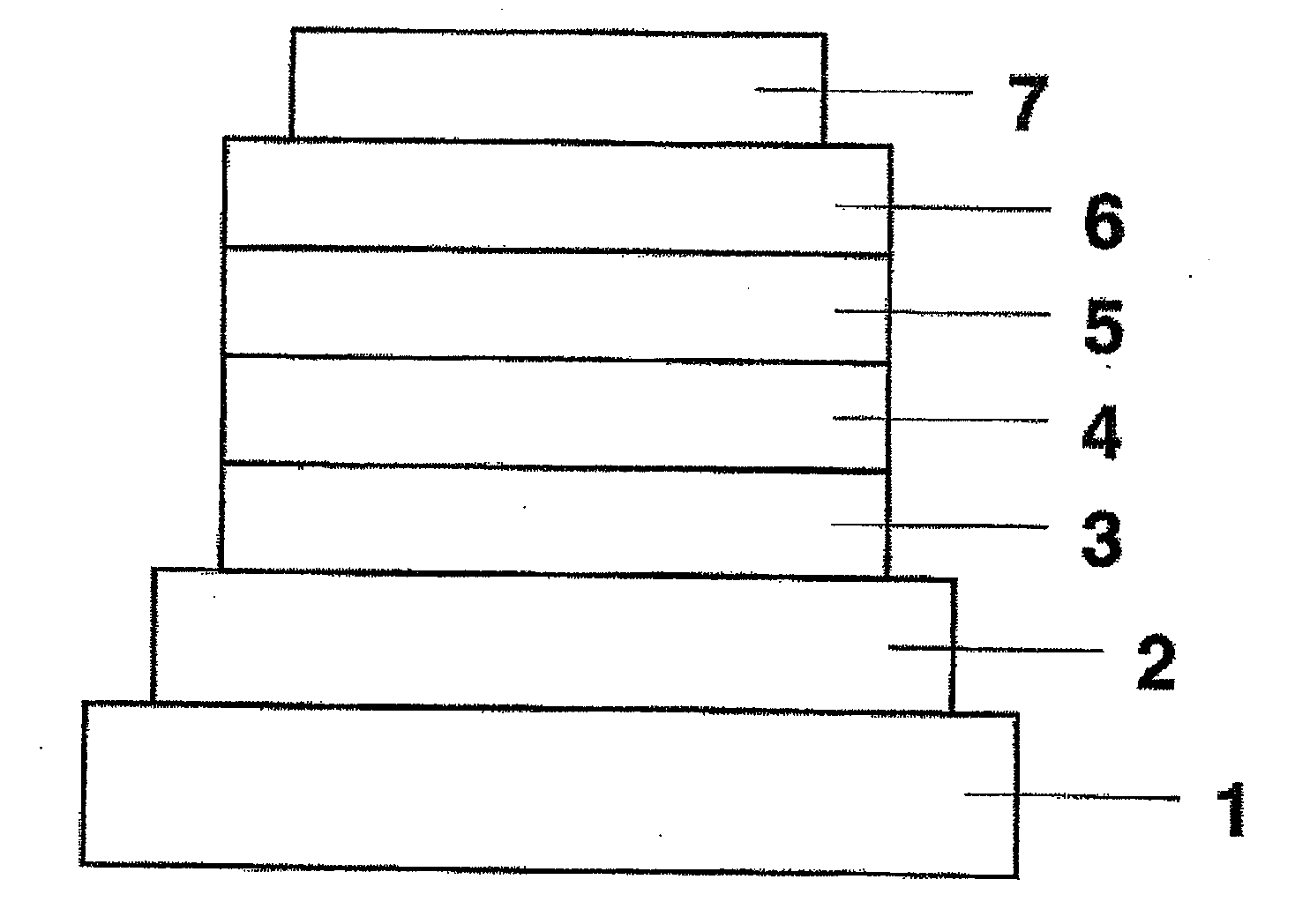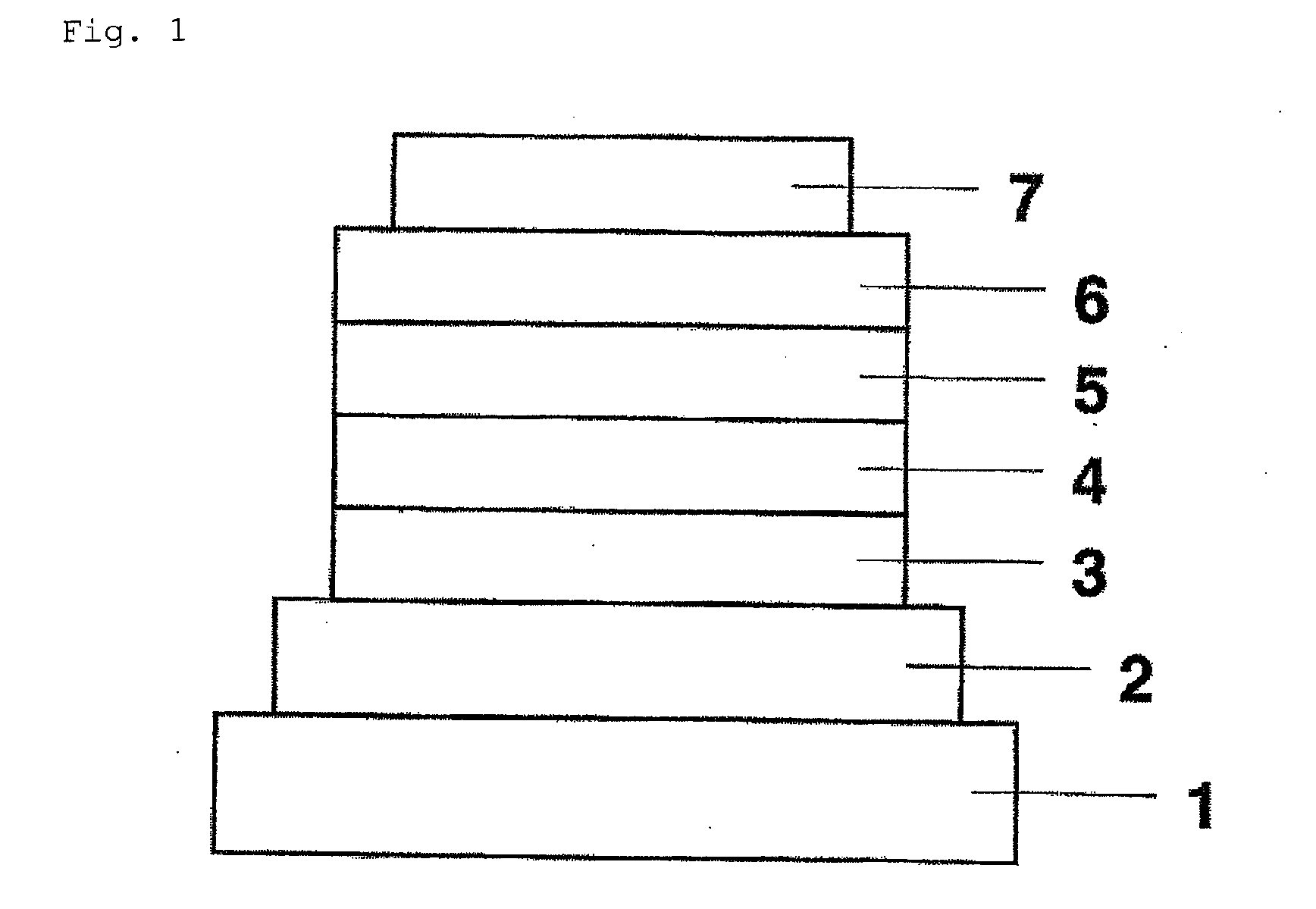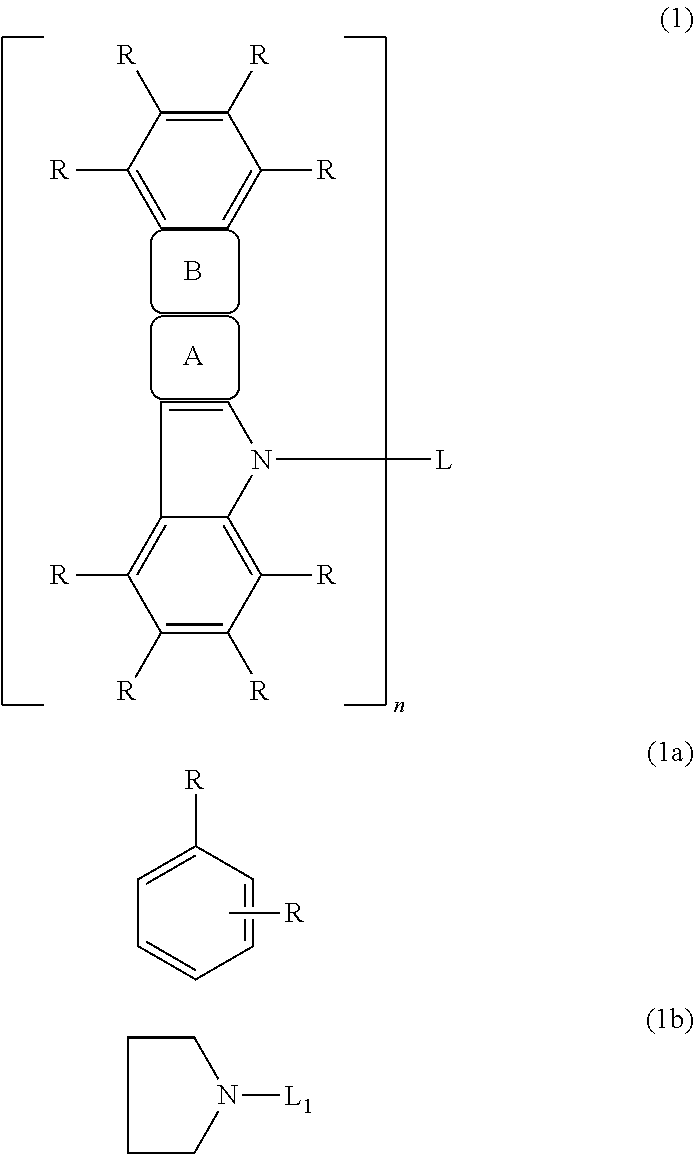Organic electroluminescent device
a technology of electroluminescent devices and organic materials, which is applied in the direction of organic semiconductor devices, thermoelectric devices, organic chemistry, etc., can solve the problems of low molecular weight host materials, inapplicability to film forming, and degrade the quality of devices, and achieves efficient phosphorescence mechanism, high phosphorescence reliability, and good balance of injected electrons
- Summary
- Abstract
- Description
- Claims
- Application Information
AI Technical Summary
Benefits of technology
Problems solved by technology
Method used
Image
Examples
synthetic example 1
Synthesis of Compound 2-9
[0069]In a 1-liter four-necked flask under a nitrogen blanket were placed 28.53 g (111.4 mmol) of indolo[2,3-a]carbazole, 21.56 g (156.02 mmol) of potassium carbonate, 35.41 g (557.21 mmol) of copper powder, 30.00 g (111.4 mmol) of 1-bromo-3,5-di-tert-butylbenzene, and 450 g of tetraethylene glycol dimethyl ether and the mixture was heated at an inner temperature of 205° C. with stirring for 24 hours. The reaction mixture was cooled to room temperature, the solid was filtered off with a filter aid, and the filtrate was concentrated under reduced pressure and then fractionated and purified by a silica gel column to yield 7.42 g of a white solid. The FD-MS spectrum of the white solid has a peak of protonated molecular ion (MH+) at m / z 445.
[0070]Then, 7.42 g (16.71 mmol) of the white solid and 150 g of dehydrated dimethylformamide were placed in a 300-ml recovery flask under a nitrogen blanket and 1.36 g of sodium hydride (58.8% dispersion in oil, 33.4 mmol) wa...
synthetic example 2
Synthesis of Compound 2-10
[0071]In a 500-ml three-necked flask under a nitrogen blanket were placed 9.84 g (38.4 mmol) of indolo[2,3-a]carbazole, 15.94 g (115.33 mmol) of potassium carbonate, 12.22 g (192.22 mmol) of copper powder, 10.00 g (38.4 mmol) of 4-tert-butyliodobenzene, and 150 g of 1,3-dimethyl-2-imidazolidinone and the mixture was heated at an inner temperature of 205° C. with stirring for 20 hours. The reaction mixture was cooled to room temperature, the solid was filtered off with a filter aid, and the filtrate was concentrated under reduced pressure. The concentrated filtrate was transferred to a separatory funnel, 700 ml of ethyl acetate and 10% hydrochloric acid were added, the mixture was left standing for 0.5 hour, and the lower layer was discarded. The upper layer was washed with distilled water and then with a saturated aqueous sodium chloride solution, dried over magnesium sulfate, and stripped of the solvent by distillation under reduced pressure to yield a br...
synthetic example 3
Synthesis of Compound 3-4
[0073]In a 1-liter four-necked flask under a nitrogen blanket were placed 45.0 g (0.176 mol) of indolo[2,3-a]carbazole, 72.9 g (0.527 mol) of potassium carbonate, 55.9 g (0.879 mol) of copper powder, 29.0 g (0.088 mol) of 1,3-diiodobenzene, and 638 g of tetraethylene glycol dimethyl ether and the mixture was heated at an inner temperature of 205° C. with stirring for 18 hours. The reaction mixture was cooled to room temperature and the solid was filtered off with a filter aid. The filtrate was transferred to a separatory funnel, 1,400 g of 10 wt % hydrochloric acid was added, and the mixture was extracted with 2,100 g of ethyl acetate. The ethyl acetate layer was washed successively with distilled water and a saturated aqueous sodium chloride solution and dried over magnesium sulfate, the hydrated magnesium sulfate was removed by suction filtration, and the solvent was distilled off under reduced pressure. The residue was reslurried in dichloromethane and th...
PUM
 Login to View More
Login to View More Abstract
Description
Claims
Application Information
 Login to View More
Login to View More - R&D
- Intellectual Property
- Life Sciences
- Materials
- Tech Scout
- Unparalleled Data Quality
- Higher Quality Content
- 60% Fewer Hallucinations
Browse by: Latest US Patents, China's latest patents, Technical Efficacy Thesaurus, Application Domain, Technology Topic, Popular Technical Reports.
© 2025 PatSnap. All rights reserved.Legal|Privacy policy|Modern Slavery Act Transparency Statement|Sitemap|About US| Contact US: help@patsnap.com



